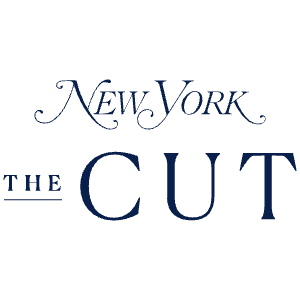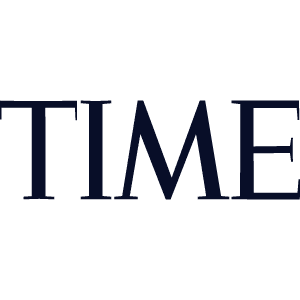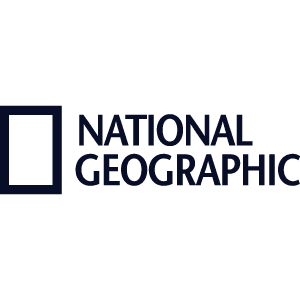Our Mission
Storytelling for Nature Preservation
We are a community of scientists, storytellers, journalists and filmmakers who are dedicated to the wild, and specifically the Great African Seaforest.
We advocate for the healing of our planet by connecting people to nature through our science-based immersive storytelling.
“I need no convincing that an ecosystem such as this is of inestimable value & must be protected.”
SIR DAVID ATTENBOROUGH
Our Projects
Inspired by Nature
Supported by Science
Guided by Indigenous Wisdom
All our work is based on our connection to the Great African Seaforest. This underwater forest is a deep source of inspiration for our minds, souls and hearts. By sharing these experiences with the world, we hope to inspire a global movement of nature connection and more stories about the intrinsic relationship between humans and the living planet.
Films
World-class films are an integral part of our content. We tell immersive, personal stories about people and nature, to a global audience. Our films include the Netflix Original My Octopus Teacher; Older than Trees – a film about the future of sharks and rays, and our newest feature documentary Pangolin: Kulu’s Journey about a special baby pangolin.
Books
Our Sea Change book has been republished as Underwater Wild, and we released a children’s book, A Journey Under the Sea. Craig Foster’s new book Amphibious Soul about “Finding the wild in a tame world,” based on his own ‘rewilding,’ is available to purchase.
Exhibitions
Sea Change Project collaborates on multimedia exhibitions that convey the story of our interconnectedness with the natural world. Showcasing the latest research on the origins of Homo sapiens while raising awareness for the Great African Seaforest and kelp forests worldwide. Visit the Origins exhibit at Cape Point, De Hoop Nature Reserve and most recently at Stillbaai.
Education
Having a connection to nature is everyone’s birthright. It is often said we must leave a better planet to our future children but we need to also leave better children to become custodians of this living world and for that we need nature education. We are committed to sharing our love and knowledge of the Great African Seaforest, and nature as a whole, with as many people as we can reach to inspire a sea-change.
Science
Science guides all our work at Sea Change. We conduct biodiversity research and collaborate with academic institutions to uncover the secrets of the Great African Seaforest. Through our 1001 Seaforest Species project, you’ll encounter the extraordinary creatures of this underwater ecosystem and discover their remarkable stories. This project blends science, underwater tracking, and storytelling to illuminate the hidden world of the Seaforest.
Podcasts
Our podcast series Back to the Water, hosted by Zolani Mahola and Pippa Ehrlich, asks what it means to be disconnected from nature and one’s culture – and what happens when you reconnect. The first episode of Back to the Water, “More Than One Octopus” premiered at Tribeca Festival, winning in its category, and available on all podcast platforms.
PATRON & AMBASSADOR
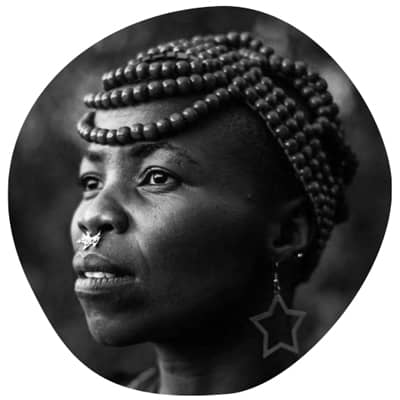
Zolani Mahola
Vocalist, Actress & Nature Activist
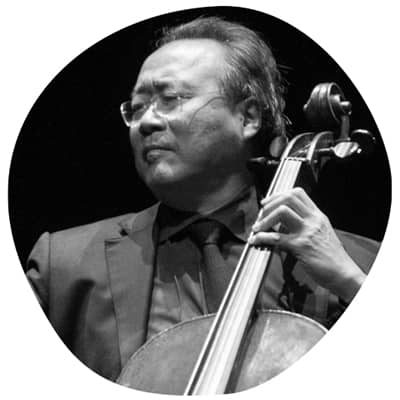
Yo-Yo Ma
Cellist
YOU CAN MAKE A DIFFERENCE
Preserve the Great African Seaforest
Kelp forests are highly productive near-shore marine ecosystems. They are biodiversity hotspots, sequester carbon, release oxygen and slow coastal erosion. They are found on 30% of our world’s coastlines and are one of the most vulnerable marine ecosystems to the climate emergency.
Our first goal was to make the Great African Seaforest a global icon and bring attention to the world’s kelp forests. With your help and support following the success of My Octopus Teacher, we achieved this.
In this time of environmental upheaval and biodiversity loss, we need to keep ensuring the long-term preservation of the Great African Seaforest. You can help by continuing to support our work in reminding people of their intrinsic connection with nature.
WHAT YOU CAN DO
Take Action
Lack of knowledge and awareness, and our human impact on this planet, are at the root of all threats to the Great African Seaforest and our global kelp forests. We are in the ocean every day, learning the secrets of the seaforest and finding stories that inspire people to reconnect with nature.
We hope our stories, knowledge and love of this environment can remind us that we are part of the natural world and motivate action that allows the living planet to thrive and regenerate itself.
To help us ensure the long-term preservation of the Great African Seaforest and to raise awareness for kelp forests globally, please watch, donate and share.
Social
The latest round-up of positive stories from across the globe — from AI-aided crime busting to a safety net for fish.
Images: @pexels @helen_walne
#seachangeproject #positivenews #biodiversity #ocean #trafficking #ai #newzealand #china @sanbi_za

#0027 - Buoy barnacle (Dosima fascicularis)
There are goose barnacles that attach themselves to floating objects … and then there are go-it-alone goose barnacles that make their own floats. Translucent blue in colour, with a short stalk and thin, transparent shell plates, Buoy barnacles have the unique ability to secrete polystyrene-like floats using modified cement glands at the base of the stalk. This rare trait is exclusive to adults – larvae must first settle on small floating substrates – plastic pellets, feathers, Spirula shells or other fragments – before maturing into rounded aggregations suspended beneath their self-fashioned floats. This progression from young hitchhiker to self-sufficient grown-up is extremely rapid, and it takes about 45 days for animals to become reproductive adults. Such ingenious design!
Images: Jannes Landschoff
@saveourseasfoundation #seachangeproject #buoybarnacle #1001species #1001speciesproject #taxonomy #marinebiology #greatafricanseaforest

Huge congratulations to @the_rewilding and the incredible team behind Pangolin: Kulu’s Journey, which has won the @jacksonwildorg award for Conservation Long-Form.
The film was a collaborative effort with @lapalala_wilderness @africanpangolinconservation @georgechignell @pangolincrisis and @swatithiyagarajan, who worked tirelessly and with such passion to bring the story to life. Thank you also to @jsgrimshaw and Nick Shumaker.
Sound engineer @barry_donnelly_insta did such an amazing job under often challenging circumstances, and the music by @zolanimahola @sky_dladla @annenikitin @alastairmcnamaracomposer @tsbkelly provided beautiful depth to the story.
And, of course, the film wouldn’t have existed without @maverick_gareth and Kulu, who was brought to the world’s attention thanks to @africa_alive @funnykerk @anoncontent @netflixfilm and @wildarcfilms
It’s our hope that telling Kulu’s story will help give these endangered animals a fighting chance. Thank you @jacksonwildorg for this recognition and for showcasing the amazing work being done all of the nominees.
#pangolin #pangolinkulusjourney #seachangeproject #jacksonwild #netflix

Dr Jane Goodall has left her body but her spirit stays with the Earth for she fought so hard. Unsurprisingly, she passed away while working – her gruelling schedule of talks and appearances around the world where she felt the urgency to spread her message. Yet even in the midst of her crazy schedule, she found the time and generosity to help anyone who reached out and asked for it, like when we asked her to voice Mother Nature for a campaign we did. She stayed up late into the night to record her voice on her own computer.
Craig and Jane’s friendship was founded on a deep love for our planet and a reverence for all living beings. There will never be another like her, and we are so grateful for her life and the gifts she brought to the world.
Paying tribute to Jane late last night, Craig wrote: ‘In the W-shaped eye of the cuttlefish, I see you. In the clicking of the bull eland’s tendon, I hear you. In the smell of petrichor, it’s you. My heart aches for you, Jane, but my spirit knows you are right here, for if there ever was a human who is the voice of Mother Nature, it’s you – my hero, my friend, my inspiration. The Earth doesn’t make people like you anymore, with superhuman strength to work at full pace till 91, driven by your insatiable love of our great Mother, and the deepest empathy for all of creation. What a life you led. You make us proud to be the human animal. I love you.’
She is now a spirit of the forests she fought for, a whisper in the wind for anyone who needs the courage, the energy and the will to stand for the biosphere. A great elder and ancestor who will guide our path.
She said: ‘I’m about to leave the world with all the mess, whereas young people have to grow up in it. If they succumb to the doom and gloom, that’s the end. If you don’t hope, you sink into apathy; hope is a crucial way to get through this.’
She gave us a ‘Reason for Hope’ and we will remember her in all that we do
Our deepest condolences to her family and everyone who loved her.
Pictures: Tom Foster
@janegoodallinst #janegoodall #nature #inspiration #seachangeproject

A human on the beach, an animal watching her, and a language beyond alphabets… Read Swati’s latest blog about listening to the wild and how words are failing nature. Link in bio.
@swatithiyagarajan #seachangeproject #greatafricanseaforest #milesrichardson #tracking #natureconnection

#26 Simon’s Town cuttlefish (Sepia simoniana)
Field identifications can be complex for many species, and few creatures illustrate this better than cuttlefish. Identifying local species is notoriously tricky due to their wildly variable colouration, body shape, and posture. Add to that their ability to transform their appearance in seconds, and you’ve got a recipe for confusion.
For years, we had called the large, common cuttlefish in the kelp forest the Patchwork cuttlefish (Sepia vermiculata). When working on the 1001 Species project and looking through hundreds of pictures of a decade of diving, we began to suspect that this name was not the right one. Looking at all the literature, we realised that another species of big cuttlefish, the Simon’s Town cuttlefish (Sepia simoniana), occurs in the region. Its mantle has a rougher texture compared to the Patchwork, and its clubs on the tentacles are different. Still, we couldn’t be certain from pictures alone.
That changed when we finally glimpsed its elusive tentacle clubs, thanks to an unexpected, whiskered ally. The specialised tentacle appendages, used for defence and hunting, are tucked away between the arms, making them nearly impossible to spot in the wild. But our furry companion revealed the crucial clue we needed to confidently identify the Simon’s Town cuttlefish.
Curious how the mystery unravelled? Dive into the full story in our latest blog. Link in bio.
Images: Craig Foster and Jannes Landschoff
@saveourseasfoundation #seachangeproject #cuttlefish #taxonomy #1001species #1001project #marinescience #marinebiology #greatafricanseaforest

This Heritage Day, we celebrate not only our rich cultural diversity but also the biodiversity of our land and sea – and we’re so excited to honour this with something truly special! After five years of working together, we’re proud to present a new creation with @zolanimahola – musician, storyteller, and beloved voice of this place. Tonight, at @themojomarket Heritage Day Street Festival, Zolani will debut 𝘜𝘯𝘥𝘦𝘳 𝘛𝘩𝘦 𝘞𝘢𝘵𝘦𝘳 – a song drawn from the depths of the Great African Seaforest and infused with unique instruments and sounds, including those of an ‘octopus drum’, crafted from living kelp. Join us for this unforgettable performance and celebration. Tickets are available through Quicket – but they’re going fast, so don’t miss out!
@zolanimahola @themojomarket #heritageday #underthesea #seachangeproject #greatafricanseaforest @the_rewilding #feminineforce #myoctopusteacher

From San words echoing birdsong to Gaelic letters rooted in trees, indigenous languages remind us that nature once lived in every phrase we spoke.
Today, research shows we’ve drifted far from that connection.
Our upcoming newsletter explores how language shapes our relationship with the natural world. Sign up at the link in our bio to receive it.
Image 1: Pier Nirandara @piersgreatperhaps
Image 2: Gantas Vaičiulėnas via Pixels
Image 3: Pippa Ehrlich @the_rewilding
Images 4 & 5: Helen Walne @helen_walne

From whales to hedgehogs, here’s our latest roundup of hopeful stories from across the globe. 🌍💚
Image 1: Pippa Ehrlich @the_rewilding
Image 2: Shahd Safii via Pexels
Image 3: Swati Thiyagarajan @swatithiyagarajan
Image 4: Red Zeppelin via Pexels
Image 5: Chris F via Pexels
Image 6: Pixabay
#seachangeproject #ocean #biodiversity #marinescience #empathy #natureconnection #goodnews #goodnewsfeed

#0025 - Feather-duster worm - Pseudobranchiomma longa
When we think of worms, we invariably conjure up drab, squirming critters devoid of flair. However, Feather-duster worms are anything but dull.
Common in rock pools and on rocky reefs, these large worms have a sausage-like body enclosed in a soft, muddy, parchment-like tube. In this state, they might not seem spectacular, but when they feed, they extend a pair of magnificent spiral crowns of tentacles to intercept passing food particles. Ranging from white, yellow, red or purple, these appendages – which, as the name suggests, resemble featherdusters – rapidly pull back into the tube at the slightest disturbance. Who knew worms could be so flamboyant?
#1001species #1001seaforestspecies #featherdusterworm #kelpforest #kelpforestecology #taxonomy #marinescience #natureconnection

From the whorls of anemone tentacles and the radial lines of compass jellies, to the flow of water over rock and star-shaped blooms, nature speaks in fractals. These recursive patterns aren’t just beautiful — they remind us that the living world doesn’t repeat; it remembers.
#seachangeproject #fractal #natureconnection #livingworld #ocean #land #planetarywisdom

#0024 - Split-fan kelp - Laminaria pallida
One of the largest and best known of regional algae, Split-fan kelp creates a kind of understory beneath its larger, floating cousin, Sea bamboo (Ecklonia maxima). As the name suggests, a single broad blade is split into several parallel longitudinal straps that are uniformly light-brown (often a luminous gold when caught in sunlight).
Like other kelp species, Laminaria pallida is anchored to rocks and other hard surfaces by a ‘holdfast’ – a root-like structure designed to grip and stabilise. However, unlike roots, holdfasts do not absorb nutrients, and Split-fans use nutrients directly from the water to photosynthesise and sustain themselves – and, in turn, support many animals.
They are important ‘ecosystem engineers’, creating habitat for numerous smaller species that colonise the holdfasts, stipes and blades. And during storms, they ensure the survival of future generations – the sweeping action of their blades across adjacent rock surfaces brushes away sea urchins and other grazers, giving sporelings a chance to grow into golden adults.
#1001species #1001seaforestspecies #splitfankelp #kelpforest #kelpforestecology #taxonomy #marinescience #natureconnection

